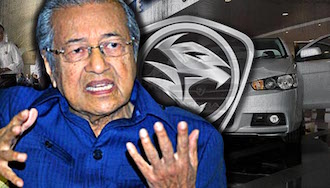Proton: How not to set up a car industry
A revisit of this white elephant project could generate a larger public discourse especially amongst taxpayers.
Koon Yew Yin, Free Malaysia Today
I am not surprised to see the April 18 front page article in The Edge entitled ”Saving Proton” where Dr Mahathir Mohamad, former prime minister and the founder of Proton was interviewed.
Among several other questions, Mahathir was asked: “Do you think the RM1.5 billion soft loan can turn Proton around?” to which he answered: “Well, under the present condition, yes, but we would have been able to turn around earlier. Proton car sales today have plummeted unusually because normally, we sell about 4,000 cars a week. It came down to 2,000 cars a week, which we can still survive on. We don’t understand why. This month, it came down to 200 cars a week. We don’t understand why”.
I am sure all Malaysians can understand why if you read on.
The founding of Proton National Bhd in 1983 was a big expensive mistake to begin with. Billions of ringgit from taxpayers was lost in the process.
The haemorrhage seems to have continued forever. Malaysians have been wondering – is there an end to this unhappy saga of the government’s foray into the production of a so-called ‘national car’ or will the burden on taxpayers and car owners be continued in other new ways?
A re-visit of this white elephant project could generate a larger public discourse especially amongst tax payers who should be more concerned as to where all the tax money they are paying have gone.
One simplistic assumption that appears to have been made by Mahathir, the initiator of the national car project, is that an industry that is growing yearly should be profitable. Proton has not. In fact, industry data shows that the total profits of all car companies in the world over the last few decades amount to only a modest return, and that only for the fittest in the industry.
The British experience
Consider the case of British Leyland a vehicle-manufacturing company formed in the United Kingdom in 1968. It was partly nationalised in 1975 with the government creating a new holding company. The company incorporated much of the British-owned motor vehicle industry, and held 40% of the UK car market.
Despite containing profitable marques such as Jaguar, Rover and Land Rover, as well as the best-selling Mini, British Leyland had a troubled history. In 1986 it was renamed as the Rover Group, later to become MG Rover Group, which went into administration in 2005. This ended mass car production by British-owned manufacturers.
Today, many British car marques have become owned by foreign companies. For example MG and Austin, Morris and Wolseley marques have all become part of China’s SAIC Motor Corporation Limited.
We should have avoided this expensive mistake
Why Mahathir did not learn anything from the disastrous British car industry experience is something that completely escapes many Malaysians. Surely any good leader would have got his officers to do due diligence. If they had done so, they would have found that the industry even with year-on-year rises in sales was not guaranteed to generate good returns to shareholders, even in a highly developed economy with a long tradition of successful car manufacturers such as Britain.
This is because one of the forces that limit profitability is the intensity of rivalry between car companies from around the world. This leads to oversupply and pressure on prices. This is exacerbated by a high degree of freedom for new competitors to enter the industry.
Unless there is an enormous internal market such as China or the United States and we can take advantage of the economies of scale, small producers such as Malaysia are forever doomed to a minor placing or full on bankruptcy in the market place.


